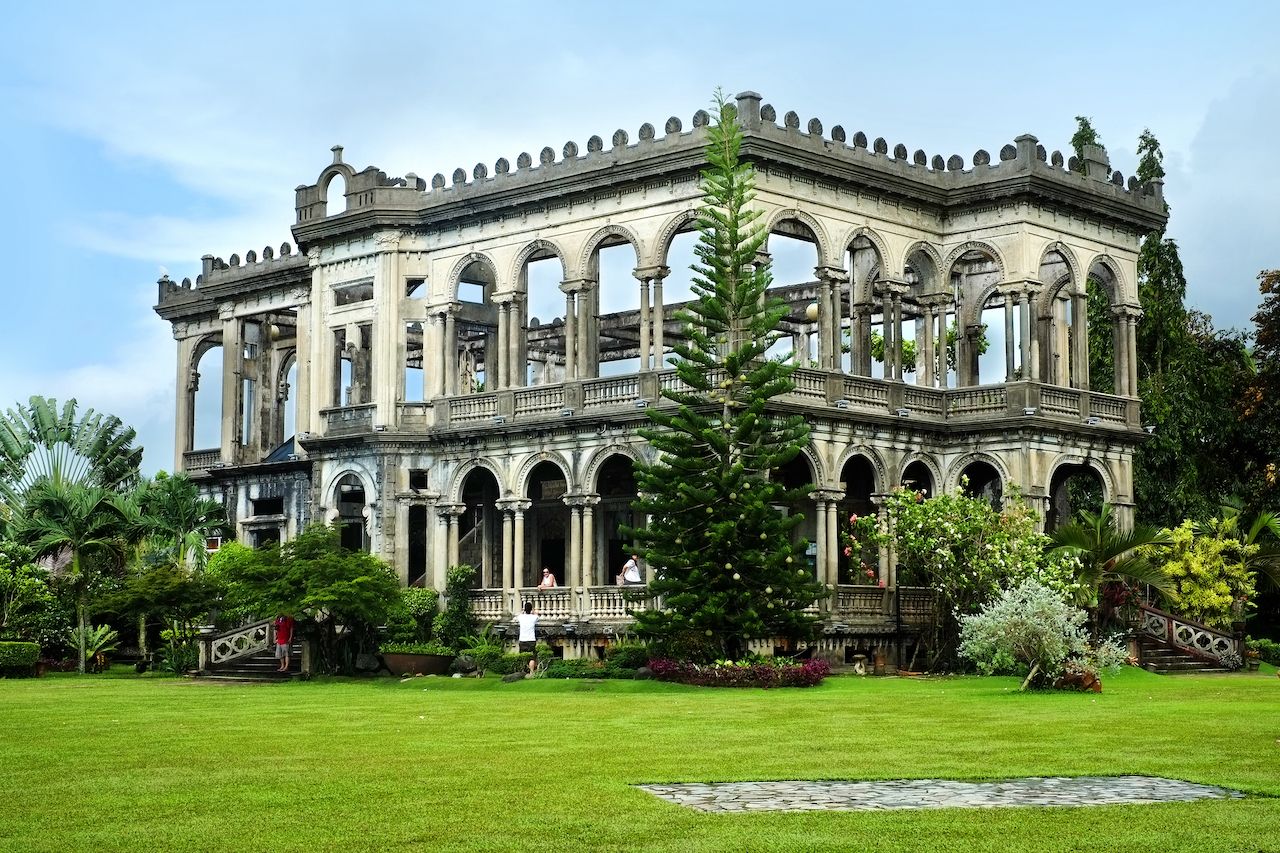Design and Materials:
Italianate Architecture: The mansion was designed in the Italianate style, characterized by its arched windows, intricate carvings, and elegant columns.
Imported Materials: Don Mariano imported various materials, including steel, concrete, and parts of the interior decor, from different countries, ensuring high-quality construction.
Structural Details:
Durability: The mansion was built with a blend of concrete and steel bars, which has contributed to its enduring structure despite the ravages of time and war.
Interior Layout: The mansion originally featured spacious rooms, grand staircases, and expansive verandas that offered panoramic views of the surrounding landscape.
Destruction and Preservation
World War II:
Japanese Occupation: During World War II, to prevent Japanese forces from using the mansion as a headquarters, Filipino guerrillas set it on fire. The blaze destroyed the wooden interiors but left the concrete structure standing.
Enduring Ruins: Despite the fire, the skeletal frame of the mansion remained, showcasing the resilience of its construction.
Current State:
Tourist Attraction: Today, The Ruins is a popular tourist destination, attracting visitors with its haunting beauty and romantic history. The preserved skeletal structure, with its charred walls and hollow windows, creates a picturesque and evocative scene.
Restoration Efforts: Efforts have been made to preserve the remaining structure, including landscaping the surrounding gardens and adding pathways for visitors.
Cultural and Tourism Impact
Symbols of Love and Loss:
Cultural Heritage: The mansion is a symbol of love, loss, and resilience. It serves as a poignant reminder of the personal history of Don Mariano and Maria Braga, as well as the broader historical context of the region.
Photographic Venue: The Ruins has become a popular site for photography, particularly for pre-wedding and wedding shoots, due to its romantic and timeless ambiance.
Economic Boost:
Local Economy: The influx of tourists has provided an economic boost to Talisay City and the surrounding areas. Local businesses, including souvenir shops, restaurants, and tour services, benefit from the increased visitor numbers.
Event Venue: The site is also used for various events, such as cultural performances, art exhibits, and private functions, further contributing to the local economy.
Broader Historical Context
Negros Occidental’s Sugar Industry:
Economic Significance: The region of Negros Occidental, where The Ruins is located, is known for its sugar plantations. The mansion itself was funded by the wealth generated from Don Mariano’s sugar business.
Colonial Influence: The architectural style and construction of the mansion reflect the colonial influences and economic prosperity brought by the sugar industry in the early 20th century.
Legacy of War:
Historical Impact: The destruction of the mansion during World War II highlights the broader impact of the war on the Philippines. The deliberate burning of the mansion to prevent its use by occupying forces is a testament to the strategic sacrifices made during the conflict.
Resilience and Preservation: The survival of the mansion’s structure symbolizes resilience and the efforts to preserve cultural heritage despite the adversities of war and time.
Future Prospects
Conservation Efforts:
Ongoing Maintenance: Continued efforts are required to maintain the structural integrity of The Ruins, including preventing further decay and addressing any safety concerns.
Cultural Programs: Developing cultural programs and educational tours can enhance the site’s value as a historical and educational resource, fostering a deeper appreciation of its significance.
Sustainable Tourism:
Balancing Preservation and Tourism: Sustainable tourism practices are essential to balance the preservation of the site with the influx of visitors. Measures include managing visitor numbers, promoting responsible tourism, and ensuring that revenue supports conservation efforts.
Community Involvement: Involving the local community in tourism management and preservation efforts can ensure that the benefits of tourism are widely distributed and that local cultural heritage is respected and preserved.
In summary, The Ruins of Talisay Mansion stand as a hauntingly beautiful testament to love, loss, and historical resilience. As an architectural marvel and cultural landmark, it continues to captivate visitors and contribute to the local community, all while preserving a poignant chapter of the region’s history.

